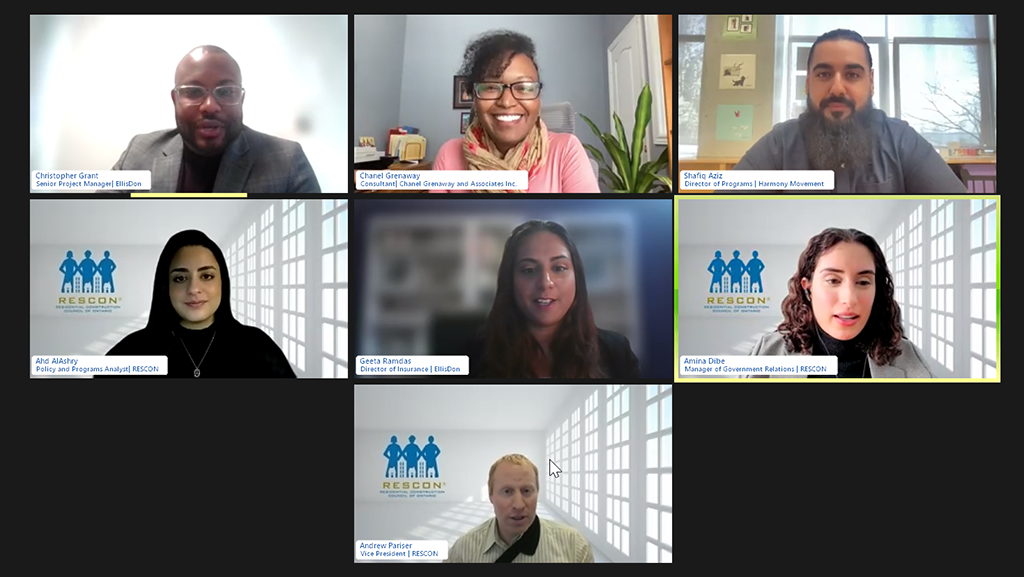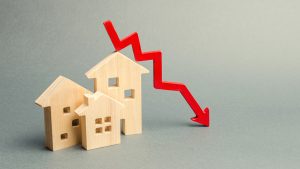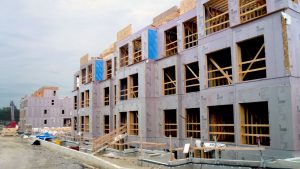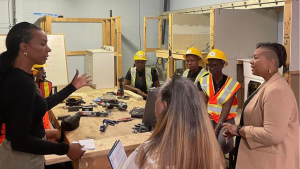While many construction companies are beginning to embark on diversity, equity and inclusion (DEI) journeys, questions still linger about how it fits into all facets of an organization and how to get buy-in from the top down.
Panellists participating in a virtual discussion held on the International Day for the Elimination of Racial Discrimination (March 21) shared some tips on where to start.
“It’s probably one of the questions I get asked most. Where to start, what’s the best way to start, how can I do this work in a way that is intentional and that you can actually start to build it with good intentions and good outcomes?” Chanel Grenaway, of Chanel Grenaway and Associates, told the crowd at the session hosted by the Residential ��������ion Council of Ontario. “What I often start with is looking at what are some possible pre-conditions for success. You want to look at your existing organizational structure and do a little bit of an assessment yourself to see where are you starting from, what are the assets that you have, what’s working and where are the gaps.”
Then you have to look at “the why.”
“What is the reason for you wanting to either be a leader in the space or to convene these conversations,” asked Grenaway. “Creating an organizational culture with empathy, so again building on the idea of giving each other grace, giving yourself grace, is important, creating a learning environment, exploring what that means. For me it means mistakes are going to happen and we’re going to work through those mistakes. It’s just being aware that what we’re trying to do is really change minds, mindsets and hearts. That’s not easy to do, right? It’s behavioural change, it’s thinking change.”
It’s also about recognizing the importance of knowing that theory and policy needs to move to action.
“You don’t have to shoot for the moon right off the hop,” noted Christopher Grant of EllisDon. “You can make small changes, day-to-day changes within the institution that can actually have rather large ripple effects. I think a lot of times when you are tackling a subject matter like this you’re looking for that moonshot type of idea. You kind of get lost there and you forget that I don’t have to jump over this mountain in one leap. You can kind of set up your base camps and go from there.”
Shafiq Aziz of the Harmony Movement acknowledged although it does take time, you need to visualize where you are heading.
“What’s that mountain, what’s that moon, what’s that direction that we’re going towards,” he said, adding you can’t do it alone. “Think about those steps as your road that leads you there and finally understand the structure, your organization, your preparation, your department, your business, but mostly those small groups of people as your bicycle, or as your car.
“You need all those moving parts along the way to be able to understand if you are making that progress, if you are going in the direction that you want.”
In addition to being proactive and engaging in these conversations often, he said it’s important to create an environment where people feel comfortable.
“We really have to get over that self judgment,” he said, adding everyone has biases. “It’s so significant in our society nowadays especially within professional settings. It’s really difficult to be able to be open and honest about these things at times because of what we might refer to in a few different ways but essentially cancel culture. If we come out and express, ‘hey, I do have these challenges or I struggle interacting with members of this group or this community,’ it oftentimes ends up being that we face harsh judgment. I feel like it’s important for us to create environments in which we can be engaging in constructive conversations, but that will never happen until you admit to yourself that it’s OK that you have these ideas.”
EllisDon’s Geeta Ramdas said it’s not only about learning but also unlearning the models and the alternative paradigms that have been taught over time and trying to step outside of those mental models in order to choose a different one. She also stressed the importance of creating a safe space for people to talk.
“People won’t ask questions because they’re afraid of getting cancelled, fired, them being discriminated against,” she said. “Putting a platform (in place) where you can have educators teaching things from a standpoint, that it’s OK to ask questions and it’s not silly that you don’t know what’s happened, because a lot of people don’t know what’s happened because they weren’t in an environment where it was taught.”










It’s better to stay in the office side if one were to pursue a career in the construction industry. Skilled trades is one the more racist workplaces in our society where even working hard might work against you.